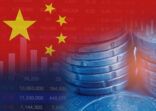The ETF products are named for the indices they track: the Next Funds JPX-Nikkei 400 Leveraged Index; the Next Funds JPX-Nikkei 400 Inverse Index; and the Next Funds JPX-Nikkei 400 Double Inverse Index.
A Nomura spokesperson said the planned product launches are linked to the availability of new indices. On 3 August, Nikkei, Japan Exchange Group and Tokyo Stock Exchange launched the JPX-Nikkei 400 Leveraged and Inverse Index.
It consists of three indices: the JPX-Nikkei 400 Leveraged (2x) Index, the JPX-Nikkei 400 Inverse (-1x) Index and the JPX-Nikkei 400 Double Inverse (-2x) Index.
 Source: Tokyo Stock Exchange
Source: Tokyo Stock Exchange
Leveraged ETFs are designed to provide returns in a certain multiple of the benchmark index and by using derivatives. This works well in a rising market, but their returns could fall in a similar proportion when the index falls. Inverse ETFs, on the other hand, are designed to follow the index in a reverse way by using short-selling and derivate strategies and work well in a declining market.
Japan has been attracting asset managers following the introduction of a stewardship code and the creation of the JPX-Nikkei Index 400 in 2014. These have helped raise awareness of the benefits of proper governance, and managers expect dividend and share buybacks to increase in the region.
A recent survey by Deutsche Asset & Wealth Management showed an increasing appetite for ETFs among institutional investors in Asia.
________________________________________________________________________________
A look at the three-year performance of Japan ETFs that are available for sale in Singapore and/or Hong Kong.

















